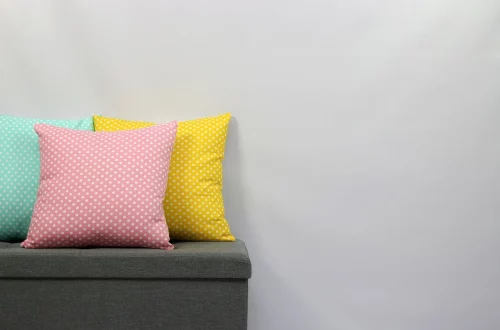
Understanding Supination Arch Support for Optimal Foot Health
Foot health is an essential aspect of overall well-being that often gets overlooked. The feet are the foundation of our body, supporting us as we walk, run, and stand throughout the day. When they are misaligned or unsupported, it can lead to a cascade of issues not just in the feet, but also in the ankles, knees, hips, and lower back. One common concern is the type of arch support individuals require, especially for those with a supinated foot type. Supination, or underpronation, occurs when the foot rolls outward during walking or running, which can lead to improper weight distribution and increased stress on various joints.
Understanding the mechanics of supination is crucial for anyone looking to maintain optimal foot health. Different foot types require different kinds of support, and recognizing your specific needs can make all the difference. This knowledge can help you make informed choices when it comes to footwear, insoles, and orthotic options. Adequate arch support tailored to your foot type not only enhances comfort but also minimizes the risk of injury, allowing you to lead a more active and pain-free life. As we delve deeper into this topic, we will explore the characteristics of supination, the importance of arch support, and practical tips for ensuring your feet are well-cared for.
What is Supination and Its Effects on Foot Health?
Supination, often referred to as underpronation, is a foot motion that occurs when the foot rolls outward during walking or running. This movement can lead to various biomechanical issues, affecting how weight is distributed across the foot and body. When the foot does not properly pronate, it can cause the outer portion of the foot to bear more weight than it should. This imbalance may lead to increased stress on the ankles, knees, and hips, ultimately resulting in discomfort or injury.
Individuals with a supinated foot type often have a higher arch, which can exacerbate the lack of shock absorption. Consequently, activities such as running or prolonged standing can become uncomfortable or even painful. Common symptoms associated with supination include ankle sprains, plantar fasciitis, and pain in the outer knee. It is essential to recognize these signs early, as they can significantly impact one’s quality of life and physical activity levels.
Moreover, supination may also affect athletic performance. Runners and athletes who supinate may find themselves at a higher risk for injuries due to the uneven distribution of forces during movement. This can lead to compensatory strategies, where the body tries to adjust for the lack of support, further aggravating the issue. Understanding the mechanics of supination and its potential effects is vital for anyone who engages in physical activity, whether it’s casual walking or competitive sports.
Incorporating specific exercises and stretches into your routine can help mitigate some of the challenges associated with supination. Strengthening the muscles around the ankles and feet can improve stability and enhance overall foot health. Additionally, being mindful of your footwear can play a significant role in managing the effects of supination. Opting for shoes designed to provide adequate support and cushioning can alleviate discomfort and promote a healthier gait.
The Importance of Arch Support for Supinated Feet
Arch support is a critical component in maintaining proper foot alignment and function, particularly for individuals with supinated feet. The arches of the foot play an essential role in distributing weight and absorbing shock. When the arches are not adequately supported, it can lead to a variety of issues, exacerbating the problems associated with supination.
For those who supinate, choosing footwear with appropriate arch support is vital. Standard shoes may not provide the necessary stability, leading to discomfort during physical activities. Shoes designed for supination typically feature enhanced cushioning and firmer midsoles to counteract the outward rolling motion. Additionally, insoles or orthotics specifically designed for supinated feet can offer additional support, helping to align the foot correctly and distribute weight more evenly.
The benefits of proper arch support extend beyond comfort. It can significantly reduce the risk of developing common foot-related injuries. By providing the necessary support, individuals can engage in physical activities with greater confidence, knowing that their feet are protected from undue stress. Furthermore, investing in quality footwear and orthotic solutions can save money in the long run by preventing injuries that may require medical attention.
It is also essential to consider that not all arch support is created equal. Custom orthotics, which are tailored specifically to an individual’s foot structure and needs, can provide the best results for those with supination. Consulting with a podiatrist or a foot specialist can help determine the most suitable options for your specific foot type and activity level.
In summary, arch support plays a fundamental role in managing the effects of supination. By choosing the right footwear and considering custom orthotic solutions, individuals can enhance their foot health and overall well-being.
Choosing the Right Footwear for Supination
Selecting the appropriate footwear is crucial for individuals with supinated feet. Understanding the unique needs of your foot type can make a significant difference in comfort and performance. When shopping for shoes, there are several factors to consider to ensure you find the best fit for your supination.
First and foremost, look for shoes that offer adequate cushioning. A well-cushioned shoe can help absorb shock and reduce the impact on your feet and joints. Many brands offer models specifically designed for runners or those with active lifestyles that incorporate extra cushioning and support.
Next, consider the shoe’s arch support. As mentioned previously, those with supinated feet typically require more support to counteract the outward rolling motion. Shoes that feature a contoured footbed or are compatible with custom orthotics can provide the necessary support for optimal foot health.
Additionally, pay attention to the shoe’s flexibility. While it’s essential to have support, shoes that are too rigid can hinder natural foot movement. Look for a balance between support and flexibility to allow for a natural gait cycle. A shoe that allows your foot to move while still providing support can enhance comfort during physical activities.
It is also wise to consider the shoe’s fit. Ensure that there is enough room in the toe box to prevent cramping and discomfort. A shoe that fits well will allow for better weight distribution and minimize the risk of developing blisters or other foot-related issues.
Lastly, don’t hesitate to consult with a professional. Visiting a specialty running store or a podiatrist can provide valuable insights into the best shoe options for your specific foot type. They can assess your gait and recommend footwear that will support your needs effectively.
In conclusion, choosing the right footwear is a vital step for individuals with supinated feet. By prioritizing cushioning, arch support, flexibility, and fit, you can significantly enhance your foot health and overall comfort.
Exercises and Practices to Improve Supination
While proper footwear is essential for managing supination, incorporating specific exercises and practices into your routine can further improve foot health. Strengthening the muscles surrounding the feet and ankles can enhance stability, reduce discomfort, and promote better alignment.
One effective exercise is the calf raise. Stand with your feet hip-width apart and slowly raise your heels off the ground, balancing on your toes. Hold for a few seconds before lowering back down. This exercise strengthens the calf muscles, which play a crucial role in foot stability. Aim for three sets of 10 to 15 repetitions.
Another beneficial practice is the towel scrunch. Sit in a chair with your feet flat on the ground. Place a small towel on the floor in front of you and use your toes to scrunch it towards you. This exercise helps strengthen the intrinsic muscles of the foot, improving overall stability and support.
Additionally, consider incorporating balance exercises into your routine. Standing on one leg for a set period can enhance proprioception and strengthen the muscles around the ankle. Start with shorter durations and gradually increase as your balance improves.
Stretching is equally important for those with supination. Tight muscles can contribute to discomfort and misalignment. Regularly stretching the calves, Achilles tendon, and the muscles in the feet can promote flexibility and reduce tension. A simple calf stretch can be performed by placing your hands against a wall and stepping one foot back, keeping the heel on the ground.
Lastly, consider the importance of rest and recovery. Allow your feet time to recover after strenuous activities. Consider incorporating practices like foot massages or using a foam roller to release tension in the muscles.
In summary, engaging in targeted exercises and stretching can significantly enhance foot health for individuals with supination. By strengthening the surrounding muscles and promoting flexibility, you can mitigate discomfort and improve overall foot function.
**Important Note:** This article is for informational purposes only and does not constitute medical advice. Always consult a healthcare professional for any health concerns or conditions.




